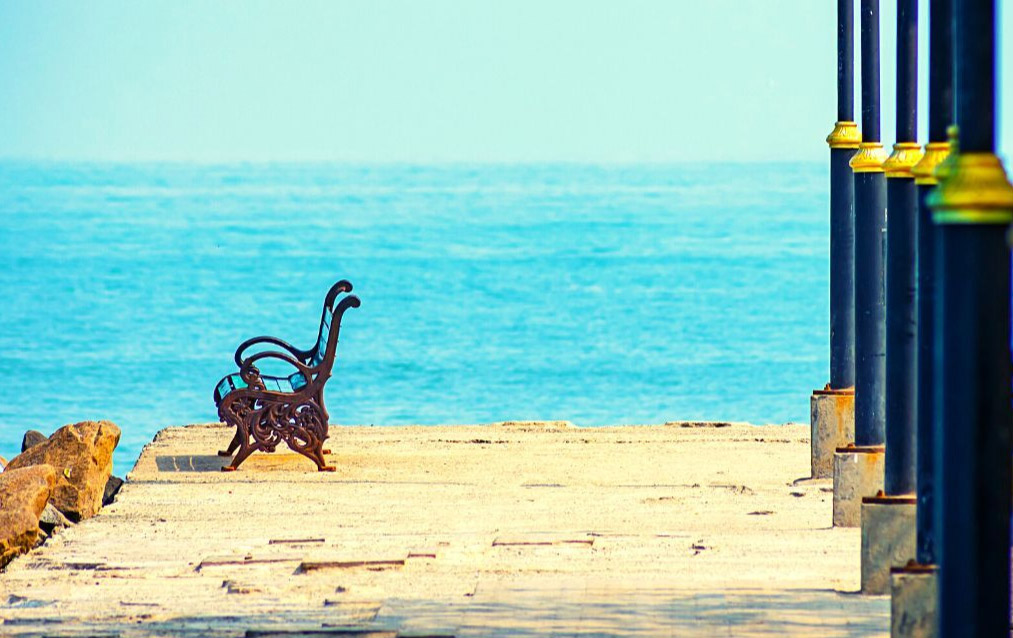The Cost of Fame: Is Fort Kochi’s Tourism Surge Endangering Its Cultural Roots?
Fort Kochi’s tourism has seen an extraordinary rise over the years, but this growth comes with hidden costs, particularly to the local culture—a change best observed through the eyes of longtime residents who once called this place home.
The ancient rain trees along 50 Feet Road in central Fort Kochi have stood tall for centuries. These trees, once silent witnesses to generations passing by from the nearby Delta Study School, now find themselves shading modern commercial spots like Pizza Hut and Haji Ali Juice Centre. Their shade falls on uneven cobblestones, and sidewalks still waiting to be paved. Fort Kochi’s streets have long been a haven for visitors, but the recent explosion in tourism has left the town in a commercial frenzy, struggling to recall a time when it was a close-knit community of families and familiar faces.
The Neighborhood
Martin, who runs Bounty Tours and Travels, stands beneath a bright blue ‘Tourist Information’ sign. He has witnessed Fort Kochi’s transformation firsthand. “This used to be a residential area,” he tells South First, gesturing to the intersection of Princess Street and Bastian Street.
“The café above our office was once someone’s home,” he explains, noting that the family has since sold the property and moved away. The lunchtime buzz from Loafers Corner Café echoes the shift from community spaces to commercial ones.
Many former residents of Fort Kochi have sold their homes to hotel developers, according to author and long-time resident Leena Mathew. “The transformation is striking,” she says. “It’s unmistakably a tourist town now.”
From Homes to Hotels
As new hotels spring up, landmarks like the Old Harbour Hotel on Tower Road continue to stand with the grandeur of their 300-year history. In the 1980s, the Sen family called this hotel their home when it was temporarily leased by a tea company for its officers.
“We called it Old Harbour House!” recalls Shweta , who was just eight years old then and attending Delta Study School. She remembers a time when the neighborhood was filled with warmth and camaraderie, a stark contrast to today’s commercialized atmosphere.
Next to Old Harbour, Koder House, once home to the well-known Jewish Koder family, stands as another symbol of Kochi’s heritage. “We were close to the Koders and visited often,” says Sen, reminiscing about their Friday gatherings, where neighbors were welcomed with wine and Jewish mutton patties. However, today’s Koder House, now hosting PlanB House of Wings, struggles to evoke the same warmth.
Shifting Tides
For 24-year-old Martin, a current resident of Fort Kochi, the town’s oversaturation with tourists has eroded its sense of community. Mukesh , 39, an ex-resident now living in Ernakulam, agrees. Both have seen their hometown’s spirit fade as public spaces have been swallowed by commercial interests. For Martin, it feels like an eviction, with the few remaining communal spaces now turned into expensive private venues.
Challenges of Preservation
Owning property in Fort Kochi comes with its own set of challenges. “Even if you manage to buy property here, it’s difficult to maintain,” says Mukesh, explaining that heritage status imposes bureaucratic hurdles on any attempts to renovate or preserve. Martin and Madhu, who run businesses in such buildings, express frustration at the lack of government support for conservation efforts.
Yet, despite these challenges, the spirit of the town endures. People still gather to play on the grounds, though Madhu dreads the upcoming Kochi Carnival, which will soon take over the town, culminating in the burning of a giant Santa Claus effigy at Parade Ground.
The Changing Carnival
Both Mukesh and Martin remember when the Kochi Carnival was a celebration for and by the locals of Fort Kochi. Mukesh recalls the days when the carnival meant visiting every house along 50 Feet Road, where neighbors welcomed them with music, snacks, and drinks. Today, the carnival feels more like a duty than a joy for Martin and his friends, who continue the tradition in an attempt to keep the past alive.
The carnival has also attracted tourists from outside the district, some of whom have caused disturbances. Martin notes that the media often portrays Fort Kochi in a sensational light, leading some visitors to provoke the locals, believing in the town’s “thrilling” reputation.
Balancing Tourism and Tradition
Kochi has always been a tourist magnet, and it continues to draw visitors with its ability to adapt to changing times. Recently, Conde Nast Traveller named Kochi one of the best places to visit in Asia for 2024. This recognition, along with the start of the tourist season, is likely to draw even more visitors.
Jagadeesh Narayanan, who runs Gallery OED on Bazaar Road, acknowledges the commercial landmarks that seem out of place but also sees a silver lining in the cultural fusion and experimentation that tourism brings. “Kochi is full of travelers, not just tourists,” he says, noting that many come seeking authenticity, which suggests that Fort Kochi still holds onto a significant part of its original charm.
Enduring Legacy
As Leena Mathew notes, efforts to protect Kochi’s heritage are ongoing, though the town has changed significantly over the years. While some residents have left, others remain, holding onto the reasons they still call Kochi home.
For Shweta , returning to Kochi after nearly 40 years was like visiting a different city. Mukesh sees each new café as a sign of a dying neighborhood, while Martin and his friends strive to keep its spirit alive. And through it all, the rain trees along 50 Feet Road continue to stand, watching yet another generation settle into the place they call home.

Six Years and Counting: Mattanchery Still Awaits SWTD Boat Services
It’s been six long years since regular boat services to the historic and tourist-favored Mattanchery were suspended, leaving both residents and tourists with no choice

The Disappearing Heritage of Fort Kochi: A Cry for Preservation
As the days go by, the chances of Fort Kochi making it to the list of UNESCO Heritage Sites seem to be fading. Concerned voices
